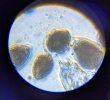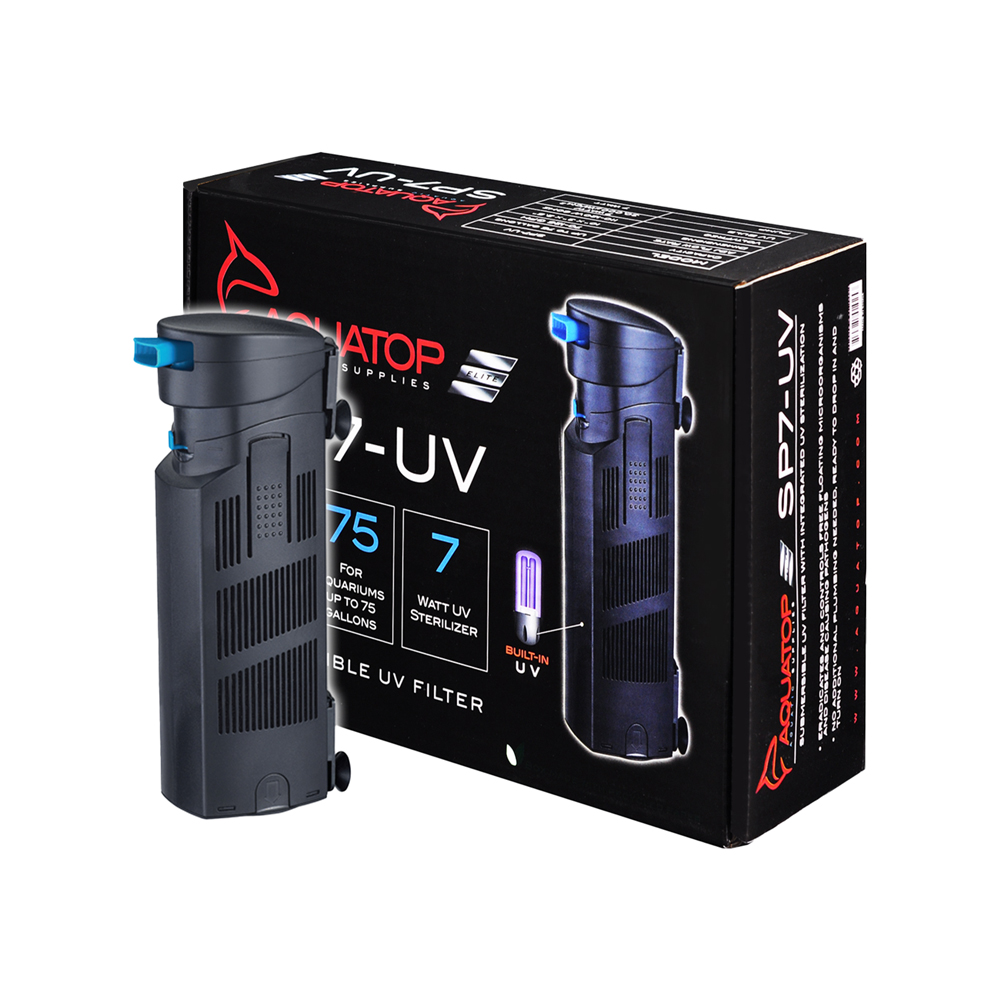Looks like ostreposis. Do they look like they’re spinning on an imaginary axis? That’s a tell tale sign of otreposis.
I did another round and I saw them moving this time. They definitely were spinning at times during movement.
What size did you get? You should just be able to slow down flow to help you with your problem (as long as you’ll get at least ~1.5x tank turnover through the UV every hour).
Reefer 170 which in theory is up to 43gallons, but I have no idea if they calculate that based on actual water levels of the sump and tank or by doing it based on theoretical max volume. Let's just say 40gal erring on the high side.
The UV I got is an in tank, with filter, unit. An aqua top, rated at 7w. I'm currently running it at it's lowest flow to maximize time under light, and it's in my display looking ugly AF. My intention was to run it until things stabilized, then move it into the sump, then eventually turn it off.
Check out the deal on AQUATOP Submersible Filter w/ 7W UV, 126 GPH for Aquariums up to 75-Gal, SP7-UV at Aquatop

www.aquatop.com
Seconding the diagnosis of ostreopsis based on your pictures. I won't stop you from having an excuse to get a better microscope, but I'd say those are good enough for a diagnosis.
Are your nitrate and phosphate detectable? If so, I'd feed heavier to raise them, plumb in a UV, and dose bacteria (microbacter 7 or similar) directly in the sand to compete, with a 3 or 4 day blackout for good measure.
Nitrates and phosphates are quite low. I've killed my fuge and have phosphate and nitrates being dosed through my ATO water to try and slowly raise things up.
I'll be honest though, as much as I have myself trumpeted the "feed more", "raise numbers" mantra, I've been starting to really have trouble buying it. The logic doesn't make sense to me when I try and really think it through.
In my head I'm thinking of that rabbits and foxes differential equations problem. More rabbits lead to more foxes because they get eaten, more foxes lead to less rabbits because they eat more. Eventually the system stabilizes. That seems like the theory behind feed more.
However, that doesn't make sense to me here, because that theoretical balance point would seemingly be at nutrient levels going to 0. If the nutrient levels are non zero, or increasing because you're feeding more, you're feeding all those things including the dinos, so it should make dinos worse. It's not a zero sum situation, it's one where everything should be getting worse.
More simply, if algae and dinos both consume the same things, and those things aren't 0, why wouldn't both continue multiplying? Is there a theory that algae are eating the dinos, or something else is? Thoughts?
However along these lines I am trying to reduce my carbon additions to my tank, under the assumption dinos consume carbon but algae don't (I read that somewhere). Because of that I'm currently switching off All For Reef over to 2-part, and that's why I'm dosing nitrates and phosphates versus overfeeding.



